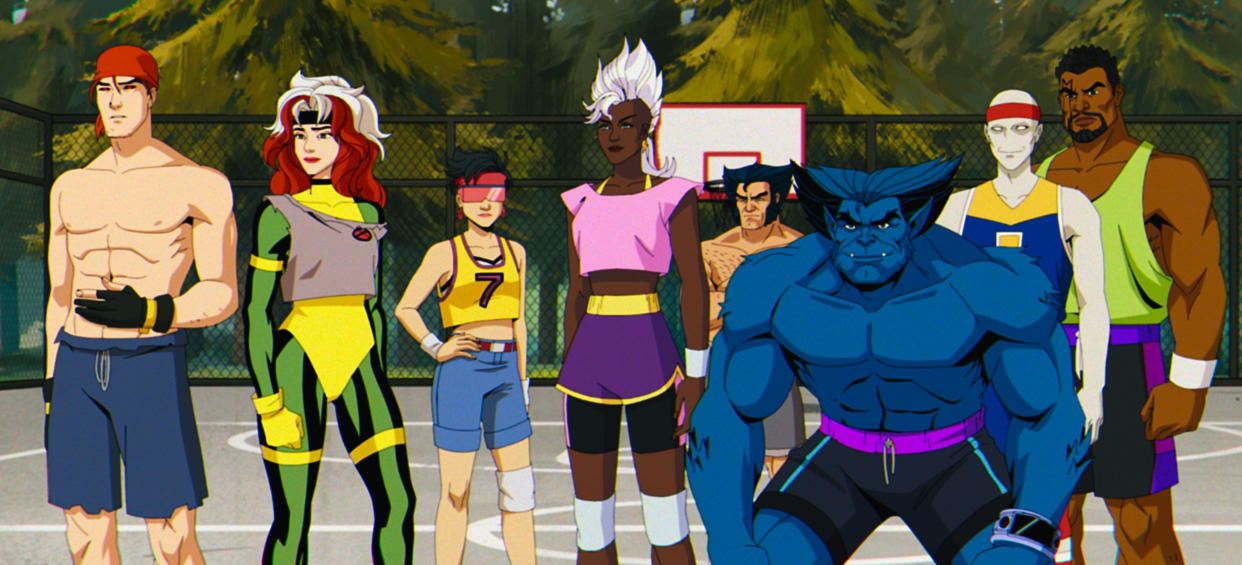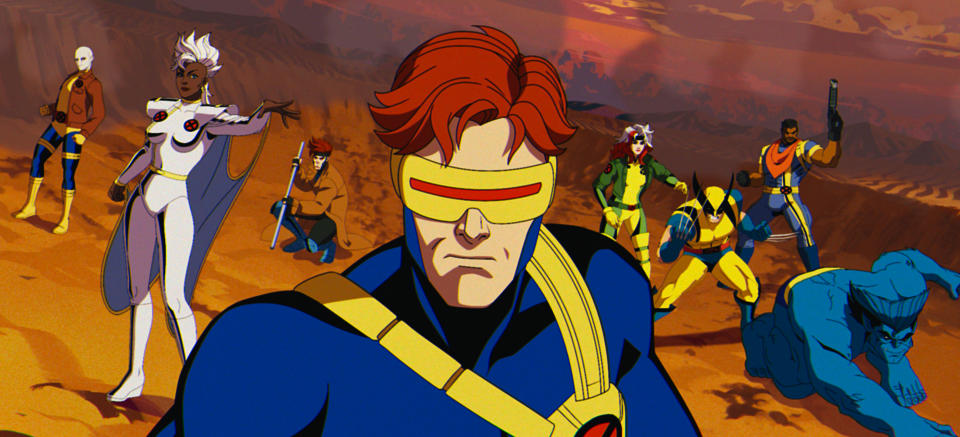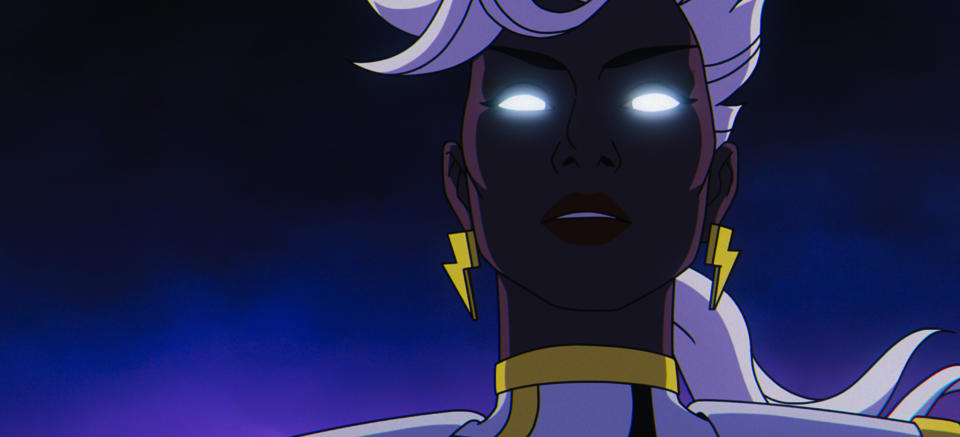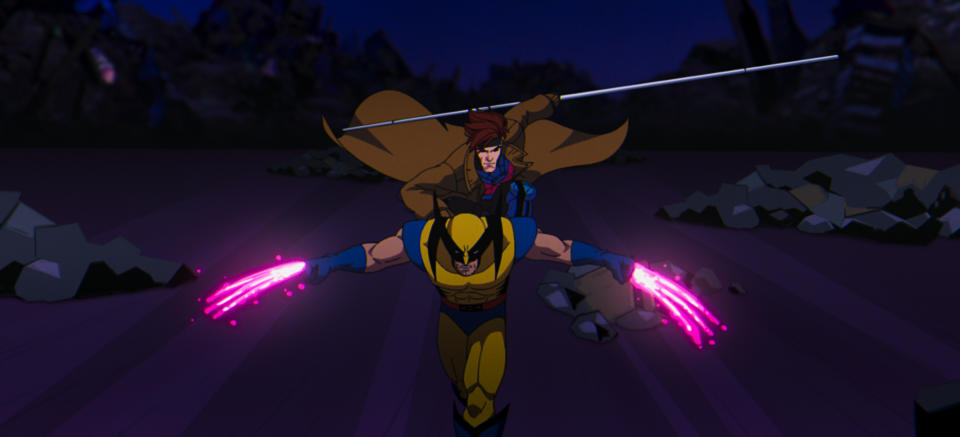‘X-Men ’97’ Amps Up the Retro 2D Animation to Combat a More Dangerously Divisive World

The beauty of “X-Men ’97” (currently streaming on Disney+) is that it’s more than just a nostalgia trip — it’s a very timely continuation of “X-Men: The Animated Series” that addresses today’s more complicated world while staying true to the spirit of the original. There’s a greater celebration of queer diversity (Morph has been redesigned as a non-binary shapeshifter) but also an accelerated powder keg of hate, which makes the mutants’ enemies much more formidable. This calls for drastic action, which is why the torch has been passed to former arch nemesis Magneto (Matthew Waterson) to lead the X-Men following the loss of Professor Xavier.
The 10-episode animated series also represents Marvel’s first “X-Men” project since regaining the rights from Fox and serves as a prelude to the franchise joining the MCU in this summer’s lone Marvel movie, “Deadpool & Wolverine.” Yet it was vital that “X-Men ’97” continue in the spirit of the original, hand-drawn series, bolstered by the return of several of the voice actors and the iconic main title theme (performed by The Newton Brothers, who composed the score).
More from IndieWire
'The Holdovers,' 'Succession,' and 'The Bear' Win Top Prizes at WGA Awards (Complete Winners List)
'SNL' Parodies 'Barbie' and Taylor Swift as Emily Blunt Crashes Ryan Gosling's Monologue
“It started with the comic books holding up a mirror to society in the ’60s — the X-Men fought for a world that feared and hated them from the beginning,” Brad Winderbaum, executive producer and Marvel Studios head of TV, streaming, and animation, told IndieWire. “And then 30 years later in the ’90s, when they made the original show, the societal conflict hadn’t disappeared because of the X-Men. And now, nearly 30 years later, we’re doing what X-Men have always done, which is to hold that mirror up to ourselves and help people have conversations about it, in a constructive way, using art as their medium to do it.”
The core mutant team is back: Cyclops (Ray Chase) and a pregnant Jean Grey (Jennifer Hale); Storm (Alison Sealy-Smith), Wolverine (Cal Dodd), Morph (J.P. Karliak), Rogue (Lenore Zane), Beast (George Buza), Gambit (A.J. LoCascio), Jubilee (Holly Chou), and Nightcrawler (Adrian Hough). Joining them are Bishop from a dystopian future (Isaac Robinson-Smith) and the new recruit Sunspot (Gui Agustini).

The creative team, meanwhile, is led by Winderbaum, head director Jake Castorena, and head writer Beau DeMayo (“Moon Knight”); DeMayo — who completed work on Seasons 1 and 2 — was fired without explanation prior to the March 20 series launch. It was reported that his personal Instagram account (where he actively posted about the series) was deleted before the announcement of his firing.
“Beau had real passion and respect for the characters and wrote great scripts,” Winderbaum told IndieWire. “And like all of us, we’re drafting off a 60-year legacy of ‘The X-Men.’ It’s filmmaking, it takes a village. There are countless creative minds that go into an enterprise of this scale. Artistically, from the beginning, it was about building a team that weren’t just ‘X-Men’ fans, but really loved the X-Men in their heart, where that original series was.”
For Winterbaum, the original series was his gateway into comics and led to his career in the industry. It was his first introduction to serialized storytelling, with its dramatic highs and lows and cool, retro 2D animation. “And I think there’s many people who could say the same,” he added. “That’s certainly the crew we assembled, and one of the threads that binds us together. Obviously, there’s reverence and sense of nostalgia in continuing the original series, but it’s more than 25 years later, and there’s an acceleration of having it take place today.”
The same edict for staying true to the spirit of the ’90s original was applied to the 2D animation style by South Korean-based Studio Mir (“My Adventures with Superman”). But that meant relying more on sophisticated storyboarding, compositions, and lensing than the latest tech (though they used CG for layout and large vehicles). The result is richer colors and cooler-looking superpower VFX.

“We had conversations early on with director in chief, Jake Castorena, and Ryan Meinerding, our head of visual development, about creating a code of ethics,” Winderbaum said. “Because technology’s on a hyperbolic curve, and we could do whatever we want. And we cannot listen to that siren’s call. We have to stay the course. Which meant arcing ourselves back into flat-plane storytelling, at times into locked-off backgrounds. The soft kind of curves of the character designs, the big bold colors from that style of the ’90s.”
That said, they break their own rules when the drama demands it, such as in Episode 1 when the roof gets torn off The Blackbird X-Jet. “You’re following Cyclops down the z-axis, and it just gives you this emotional charge because it’s dynamically pivoting, both in the story and in the style,” added Winderbaum.
For Castorena, it was a balancing act of adhering to the code of ethics and taking advantage of wonderful visual opportunities. “We are a spiritual successor,” he told IndieWire, “looking for those commonalities that help you realize how it was done around that time for how we composite things, how we blend things, how it all comes together to make you feel like the show you remember. But also helping stay relevant for today.”
Interestingly, one of the tricks they used to evoke the look of the original series was placing filters over the animation. This created a VHS transfer effect. “No matter what you did for fine-tuning your bells and whistles back then, everything got a VHS broadcast transfer in some way, shape, or form,” Castorena said. “So there was always some sort of defining feature that let you know it was of a certain era in programming.”

Typical of the series, each episode escalates the action with bigger battles. In Episode 1 (“To Me, My X-Men”), they fight The Sentinels and Master Mold, in Episode 2 (“Mutant Liberation Begins”), they take on X-Cutioner (Lawrence Bayne) for the first time, and in Episode 3 (“Fire Made Flesh,” streaming March 27), the X-Men are blindsided by an “Inferno”-like vision of Hell, where anything goes and suddenly the rules don’t apply anymore.
“We were making sure as creatives that there were certain things we have to do to keep [the action] fresh and not fall back on what we did before,” added Castorena. “But there were definitely times where you could go a little hog, nasty, wild with some of the action or some of the modern techniques. But always bring it back to that ’90s flair.”
Now that Marvel has gotten a taste of “The X-Men,” the future prospects are wide open for invigorating the MCU. “I’d say from a narrative perspective in the multiverse, anything is possible, obviously, but I think it’s more influential from a cultural perspective,” Winderbaum said. “This is another milestone for the franchise, and, like everything that came before it, will influence whatever our live-action plans are.”
Best of IndieWire
The 22 Best Spy Movies, from 'Enemy of the State' to 'North by Northwest'
The 12 Best Thrillers Streaming on Netflix in April, from 'Fair Play' to 'Emily the Criminal'
Quentin Tarantino's Favorite Movies: 61 Films the Director Wants You to See
Sign up for Indiewire's Newsletter. For the latest news, follow us on Facebook, Twitter, and Instagram.

 Yahoo News
Yahoo News 
